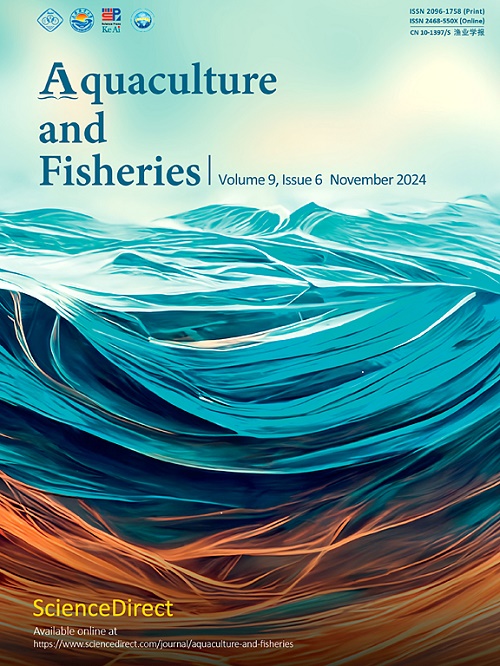蜂毒(Apis mellifera L.)对尼罗罗非鱼幼鱼(Oreochromis niloticus)的毒性和治疗影响
Q1 Agricultural and Biological Sciences
引用次数: 0
摘要
蜂毒(BV)因其治疗特性在各种医学应用中得到了广泛的研究。然而,其对水生生物,特别是尼罗罗非鱼(Oreochromis niloticus)的影响仍然知之甚少,特别是在毒性和治疗影响方面。本研究通过考察尼罗罗非鱼(O. niloticus)的生长、饲料效率、生物特征参数、全身化学分析和肝脏抗氧化酶活性,研究了蜂毒(BV)注射对尼罗罗非鱼(O. niloticus)的影响。将尼罗罗非鱼幼鱼按每公斤鱼重0、3、6、9和12毫克的剂量注射BV。注射后第14天进行观察。BV给药组间生长、饲料利用率、存活率、生物特征指标和全身组成均无显著差异。肠道酶(淀粉酶、蛋白酶和脂肪酶)的活性也无明显变化。然而,该研究揭示了肝脏中抗氧化酶(SOD, CAT和GPx)的时间依赖性反应,其活性在第4和第6 DPI时达到峰值。在第14 DPI时,与对照组和最高剂量组(12 mg/kg)相比,注射3、6和9 mg/kg BV的鱼表现出更高的抗氧化酶活性。这些结果表明BV注射后存在潜在的适应性抗氧化活性,对尼罗罗非鱼的健康和免疫应答有良好的影响。值得注意的是,效果似乎随剂量而变化,影响抗氧化酶活性和免疫力。有必要进一步研究细菌性阴道炎暴露的长期影响及其在水产养殖中的潜在治疗应用。本文章由计算机程序翻译,如有差异,请以英文原文为准。
Toxicity and therapeutical impacts of Bee venom (Apis mellifera L.) on Nile tilapia juvenile (Oreochromis niloticus)
Bee venom (BV) has been widely studied for its therapeutic properties in various medical applications. However, its effects on aquatic organisms, particularly Nile tilapia (Oreochromis niloticus), remain poorly understood, particularly concerning toxicity and therapeutic impacts. This study investigated the effects of bee venom (BV) injection on Nile tilapia (O. niloticus) by examining growth, feed efficiency, biometric parameters, whole-body chemical analysis, and the activity of antioxidant enzymes in the liver. Nile tilapia juveniles were injected with BV at doses of 0, 3, 6, 9, and 12 mg/kg of fish weight. Observations were made on the 14th day post-injection (DPI). No significant differences were found in growth, feed utilization, survival rate, biometric indices, and whole-body composition among the BV dosage groups. Similarly, the activity of intestinal enzymes (amylase, protease, and lipase) showed no significant changes. However, the study revealed a time-dependent response of antioxidant enzymes (SOD, CAT, and GPx) in the liver, with activity peaks on the 4th and 6th DPI. On the 14th DPI, fish injected with BV at doses of 3, 6, and 9 mg/kg exhibited higher antioxidant enzyme activities compared to the control and the highest dosage group (12 mg/kg). These results imply the presence of potential adaptive antioxidant activity and a favorable influence on the health and immune responses of Nile tilapia following BV injection. Notably, the effects appear to vary with the dose, influencing both antioxidant enzyme activities and immunity. Further research is warranted to explore the long-term effects of BV exposure and its potential therapeutic applications in aquaculture.
求助全文
通过发布文献求助,成功后即可免费获取论文全文。
去求助
来源期刊

Aquaculture and Fisheries
Agricultural and Biological Sciences-Aquatic Science
CiteScore
7.50
自引率
0.00%
发文量
54
审稿时长
48 days
期刊介绍:
 求助内容:
求助内容: 应助结果提醒方式:
应助结果提醒方式:


